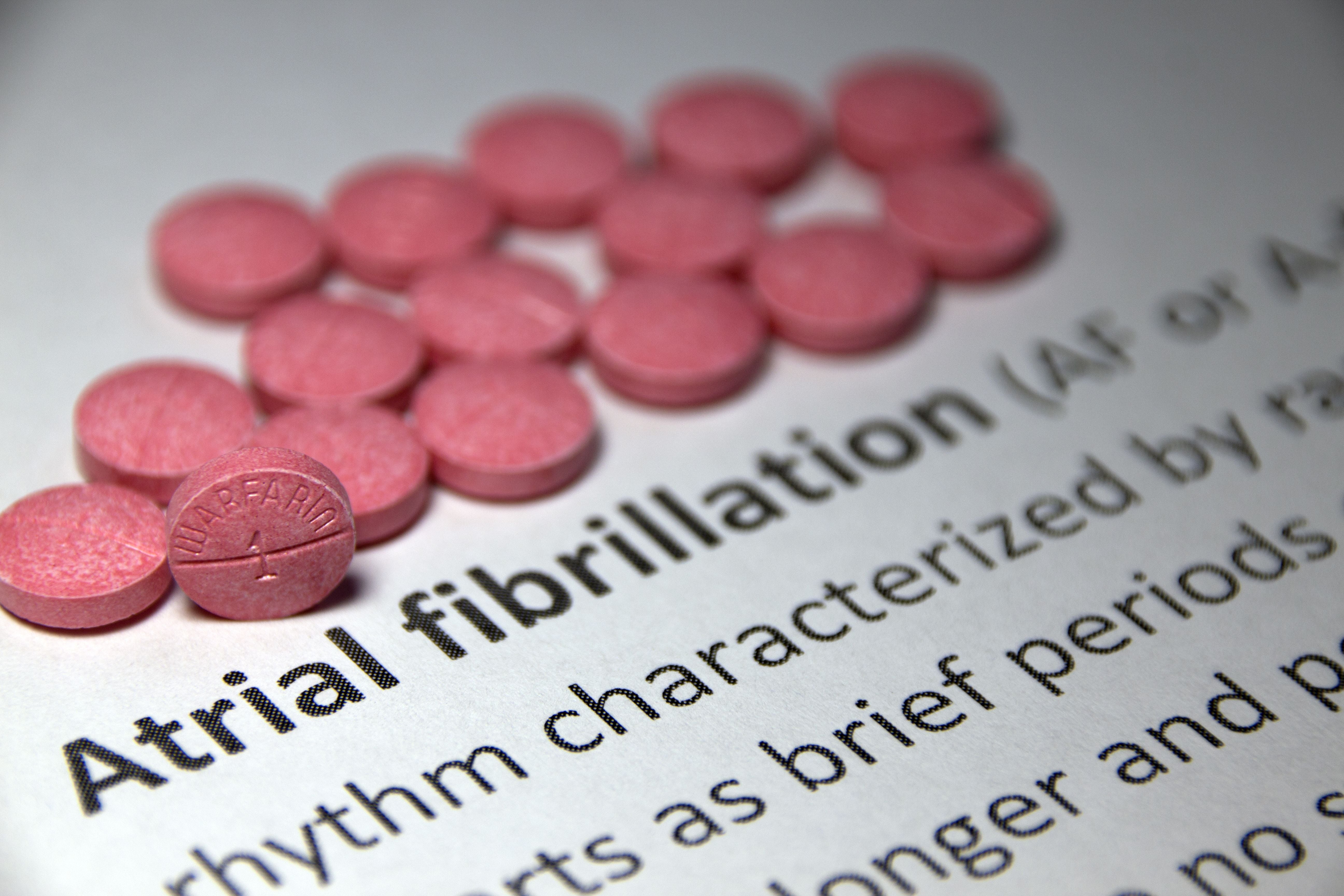Atrial fibrillation: Does it ever go away?
)
So, you've had an episode of atrial fibrillation that is now resolved. What next?
The findings of a UK-based study published in the British Medical Journal in 2018, which involved nearly 50,000 patients in general practices, found that patients with resolved atrial fibrillation remain at higher risk of stroke or transient ischaemic attack (TIA) than patients without atrial fibrillation. The researchers concluded that:
"Guidelines should be updated to advocate continued use of anticoagulants in patients with resolved atrial fibrillation."
These findings have implications for athletes, especially middle-aged athletes with a background of long-term endurance exercise.
Studies have demonstrated that long-term endurance exercise increases the risk of atrial fibrillation, both in athletes training at a competitive level and in individuals who participate in vigorous exercise at a non-competitive level. Detraining is associated with lowered risk of stroke. However, according to Melbourne-based researchers, atrial fibrillation in athletes should not be trivialised as a mere consequence of overtraining. At the time of writing, no guidelines exist for how best to manage atrial fibrillation in the ageing athletes, although the Melbourne-based researchers provide an excellent review of the challenges and potential approaches to the management of atrial fibrillation in athletes (2).
What is atrial fibrillation?
Atrial fibrillation (AF)is an irregular, rapid heart rate that may cause symptoms such as heart palpitations, fatigue, and shortness of breath. AF is the most common sustained cardiac arrhythmia in the general population. Unfortunately, it is associated with a five-fold increase in risk of stroke. Treatment with anticoagulants significantly reduces this risk, by about two thirds.
What is a transient ischaemic attack?
A transient ischaemic attack (TIA) occurs when the blood supply to your brain is blocked temporarily. You may experience a brief neurological dysfunction with the same signs as for a stroke, but they disappear within a short time, usually a few minutes. A TIA is a powerful warning that a stroke is imminent, perhaps in the next few hours, weeks or months. A TIA is considered to be a medical emergency. Treatment involves anticoagulants and/or lifestyle changes to prevent a stroke occurring.
The study
Research question. According to the researchers of the UK-based study, no clear guidance exists in European, Canadian, UK and US guidelines on how to treat patients with resolved atrial fibrillation. Such patients, if otherwise fit and healthy, may undergo no further monitoring or anticoagulant treatment. The researchers aimed to determine the rates of stroke or TIA in patients with a diagnosis of "resolved" atrial fibrillation compared to patients with unresolved atrial fibrillation and patients without atrial fibrillation.
Study design. Datasets were extracted from The Health Improvement Network (THIN), a database of electronic primary care records from UK general practices. Eligible participants were adults aged 18 years or more with no previous stroke or TIA. The study period was 1 January 2000 to 15 May 2016. Two retrospective cohort studies were conducted to determine the incidence rates of stroke or TIA (primary outcome) and all cause mortality (secondary outcome) in patients with a code for resolved atrial fibrillation (n= 11 159) versus randomly selected matched controls with diagnosed (unresolved) atrial fibrillation (n=15 059) or no history of atrial fibrillation (n=22 266).
Results. In patients with a diagnosis of resolved atrial fibrillation, the rates for stroke and TIA were lower than in patients with unresolved atrial fibrillation but 60% higher than in patients with no history of atrial fibrillation. Stroke or TIA rates in patients with resolved atrial fibrillation increased over time. In this study, from 2010, stroke or TIA rates in patients with resolved atrial fibrillation were double those in patients with no history of atrial fibrillation.
Conclusion. It appears likely that patients with resolved atrial fibrillation would benefit from continued anticoagulant prophylaxis.
Implications for athletes
As the Melbourne-based authors point out in their state-of-the-art review of atrial fibrillation in athletes:
"The same principles of reduction in symptoms and prevention of stroke that guide AF management in non-athletes is equally applicable to athletes."
Athletes often have excellent health and few comorbidities and may mistakenly consider themselves immune to any long-term effects of atrial fibrillation, especially if it has resolved. The researchers also emphasised that any updates to current national and international guidelines that may advocate continued use of anticoagulant treatment in patients with resolved atrial fibrillation has implications for athletes:
"The same strategy as that employed in the general population for stroke prophylaxis with anticoagulation should be adopted in athletes."
The associated bleeding risk of anticoagulant therapy is particularity concerning for athletes and highly active individuals. It necessitates a balance between recommended anticoagulant (also referred to as antithrombotic) therapy and potential bleeding risks inherent to sports participation, particularly in commonly encountered high-impact sports such as football, ice hockey, soccer, basketball and lacrosse.
---
References
Adderley NJ, Nirantharakumar K, Marshall T, 2018. Risk of stroke and transient ischaemic attack in patients with a diagnosis of resolved atrial fibrillation: Retrospective cohort studies. BMJ, 360: k1717 https://www.bmj.com/content/361/bmj.k1717 [published 09 May 2018]
Turagam MK, Flaker GC, Velagapudi P, Vadali S, Alpert MA, 2015. Atrial fibrillation in athletes: Pathophysiology, clinical presentation, evaluation and management. Journal of Atrial Fibrillation, 8(4): 1309. https://www.ncbi.nlm.nih.gov/pmc/articles/PMC5135187/
Flannery MD, Kalman JM, Sanders P, La Gerche A, 2017. State of the art review: Atrial fibrillation in athletes. Heart, Lung and Circulation, 26: 983-989. http://dx.doi.org/10.1016/j.hlc.2017.05.132
| Tags:Cardiac ChallengesHeart Health for AthletesHH4AAtrial FibrillationResearch Updates |

)